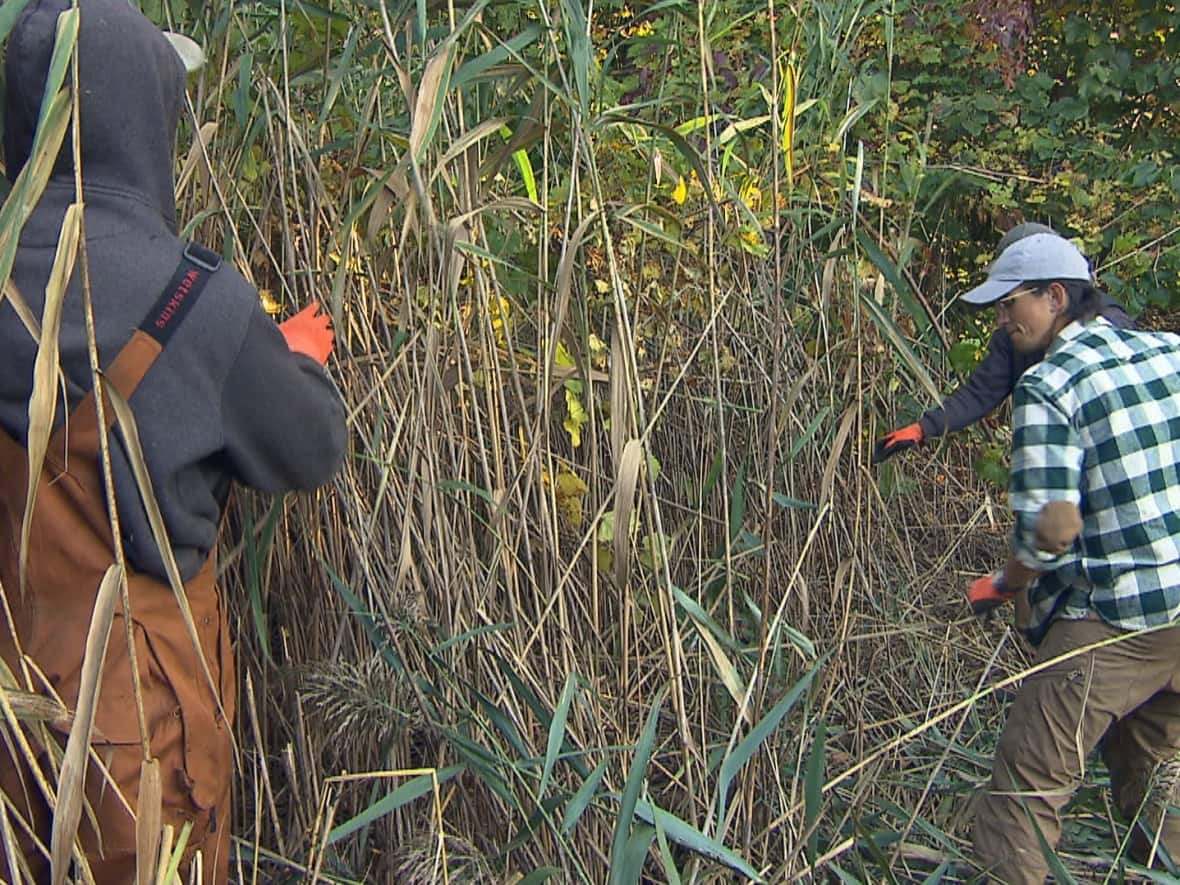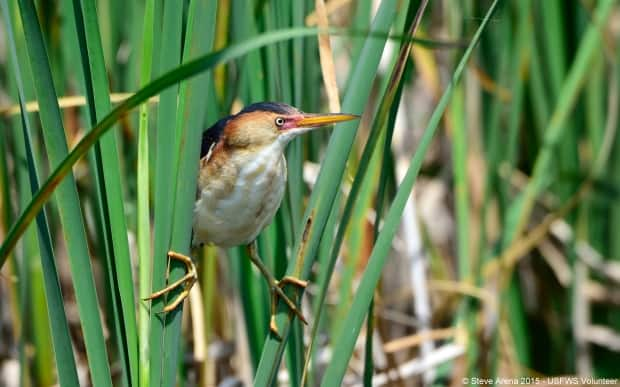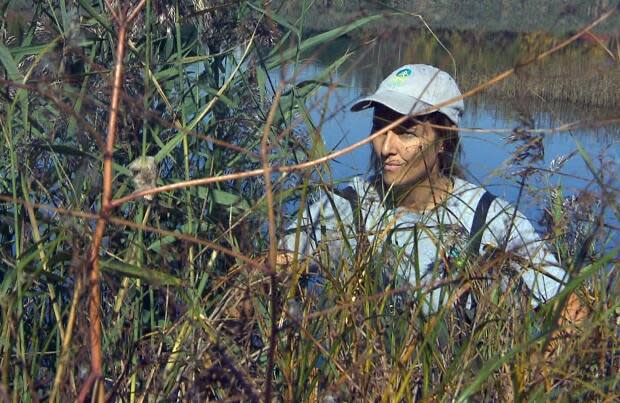How pulling invasive reeds around a Montreal lake has helped a tiny heron thrive

While most people are familiar with pulling weeds, Vincent Auclair has been pulling reeds.
A lot of reeds. All by hand. All to help the least bittern, an elusive marsh bird, thrive.
And Auclair, a project officer with Nature-Action Québec, hasn't been working alone along the shores of Lac des Battures, a small lake on Montreal's Nuns' Island. The organization has a whole crew out restoring the land to the way it once was before the reeds set root.
The reeds, known as phragmites, are invasive, growing up to about five metres tall and eating up the space and nutrients normally reserved for the native cattail.
And cattails, Auclair explained, are "the prime habitat for the least bittern."
The Committee on the Status of Endangered Wildlife in Canada (COSEWIC) designated the least bittern, the smallest of the heron family, as threatened in 2009. It's also considered threatened under the Endangered Species Act.
That doesn't mean it is endangered, but it could be if steps aren't taken to protect its habitat, according to the COSEWIC.
The least bittern is about 30 centimetres in length, has brown and beige feathers and strongly prefers to live in cattail marshes, where it builds nests and lives off frogs, small fish and aquatic insects.
Beyond Quebec, the least bittern is found in Manitoba, Ontario, New Brunswick and Nova Scotia. There are efforts across the provinces to protect the bird's habitat from invasive species, development and other disturbances.
Ontario, for example, has a recovery strategy for the least bittern and encourages people who see the bird to report it to the province's Ministry of Natural Resources and Forestry so sightings can be tracked.
Least bittern makes a comeback in Montreal
Auclair said his team has spotted the least bittern making a comeback since the restoration work began.
"This project started back in 2019 and we're at the third and last phase," said Auclair, explaining the goal is to give the marshy green space back to the least bittern so the small birds have a place to live and reproduce.

The organization's efforts to protect the environment in and around Lac des Battures date back to 2008 when the group was mandated by the borough of Verdun to maintain, develop and monitor the ecosystem there while raising awareness among visitors.
To help the least bittern and some other 200 bird species thrive in the area, the group is doing more than just pulling reeds.
"For the last week, we were planting plants also," said Catherine de Varennes.
While she enjoys the work and being outside, she said, "it can be long and it's a bit tiring sometimes, but it's for a good purpose."
Beyond pulling reeds
Brown mats made of coconut fibre are spread out in some places to curb the reeds' aggressive growth as well.
Throughout the mat, "we planted a few trees and bushes," Auclair said.

The team has also installed natural floating islands around the lake for the wildlife to use.
While the crew works, people like Louis-René Dussault enjoy the natural area. He's a photographer who was out Wednesday taking photos and, he said, he's caught a few glimpses of the least bittern.
"We don't see it often, but when you do, you remember," he said. "It's such a beautiful bird."

 Yahoo Movies
Yahoo Movies 
